How to connect the power plant to the house?
How not to do?
The first thing to tell is how it is forbidden to connect the generator to the home network. Some unfortunate electricians advise connecting the power station to the nearest outlet in the house, after disconnecting the machines on the front panel. In no case do this, because the generator power can significantly exceed the throughput of the outlet (as a rule, it can withstand no more than 3.5 kW). The result is an excess of the maximum load, short circuitfire. In addition, if you forget to turn off the machines at the input, then when electricity is supplied to the network, the backup station will instantly fail.
The only way to do without a proper connection is to connect an extension cord to the power station and already include those electrical appliances that you need. Only if your backup station is low-power (up to 4 kW) it is allowed to connect it through a power outlet. To do everything right, be sure to watch the video below.
However, if a power outage often occurs in your country house or at home, we recommend that you connect the generator to the network through a changeover switch or an autostart system - ABP. Just below we will talk about how to do it right with our own hands.
Using a cross over switch
The easiest way to connect the power plant to the home network is through a switch or a three-way reversing switch. The difference between the devices is that the switch is installed separately near the shield, and the switch can be mounted on a DIN rail, which is more convenient.
So, for starters, look at the diagram how to connect a single-phase generator to a private house:
As you can see, on top of the switch you need to connect power from the mains, below - the cable from the power plant. Middle contacts are designed to connect consumers of electricity. We draw your attention to the fact that the switch or switch must be located after the counter, but in front of the opening machines, as will be shown in the diagram below (with ABP).
As for the connection technology, it looks like this:
- Turn off the power in the house (machines on the panel).
- Connect the wires according to the diagram.
- Start the generator and wait for it to warm up for several minutes.
- Switch the switch to the power position from the power plant (according to the rules - the bottom).
When the power supply resumes on the site, you must first return the switch to the upper position, and then turn off the generator.
Using autorun
To simplify the transfer of the house to backup power supply, we recommend connecting the generator to the house network through the ABP - autostart system. The principle of operation of automation is as follows:
- ATS constantly monitors the voltage in the network.
- If the voltage disappears, the contactor opens the circuit that connects the ATS to a stationary power grid.
- The starter turns on and the power plant begins to work.
- When the engine reaches the desired speed, the contactor closes the consumers - power plant circuit.
When the power on the site resumes again, the ATS will operate in the reverse order: the contactor will open the connection with the generator and switch to stationary power supply. For a while, the home power station will work idle.
You can connect the ABP in the shield according to the following scheme:
Visual video instruction:
If you have a network in your house that has 3 phases (380 V), we still recommend that you make a backup (for connecting to the generator) only one phase. At this phase, you can "plant" only the most important electrical appliances: a refrigerator, lighting and, for example, a laptop. The fact is that there are often cases when a three-phase connection occurs phase imbalance, which can lead to a malfunction in the home wiring.
Ground loop installation
Another important step in connecting a gasoline or diesel generator to the home network is to create an individual ground loop. To make the grounding of the power plant at home, you will need a 1.5-meter metal rod (diameter 15 mm) and a copper wire. The core is driven almost the entire length into the soil. It is advisable to weld a special clamp to it, or at least a bolt in order to make it easier to connect the ground wire. Connect the rod and the corresponding terminal on the generator with a copper wire (as shown in the photo and diagram below).
Station placement recommendations
Well, the last thing I would like to tell you about is where it is best to place a home power station. The fact is that such a room should be protected from moisture and at the same time could be adequately ventilated. In addition, before installing the generator, you should consider that quite unpleasant noise will be emitted from this technique. Given these nuances, it is recommended to install and connect the power station in the garage or any other garden building, as in the photo below.
Another caveat - in the room where the mobile station should be located, there should not be a high temperature. No matter how, you are dealing with fuel, do not forget about it! All requirements for installing a generator in a private house we described in a separate article, which we strongly recommend that you read!
That's all I wanted to tell you about connecting the power plant with your own hands. We hope that now you know how to connect the generator to the house network and how to ground this equipment!
It will be interesting to read:

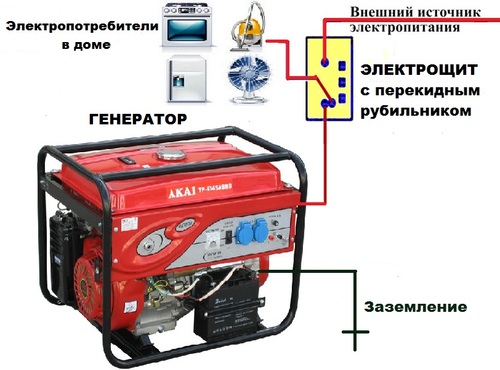
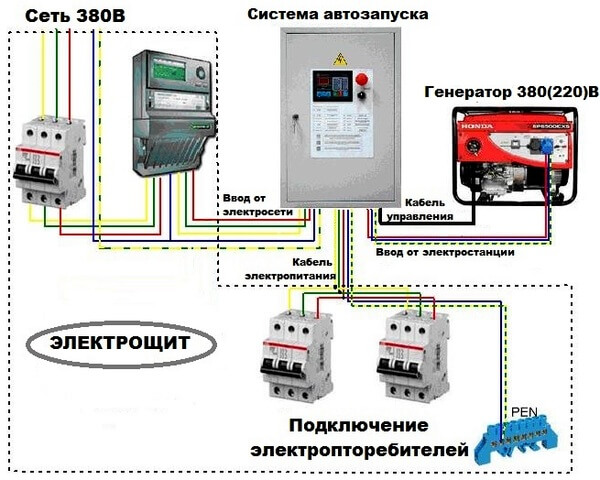
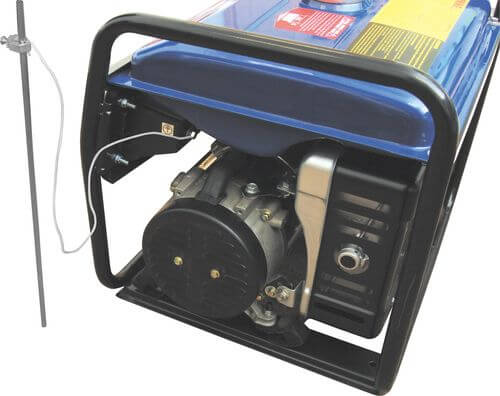
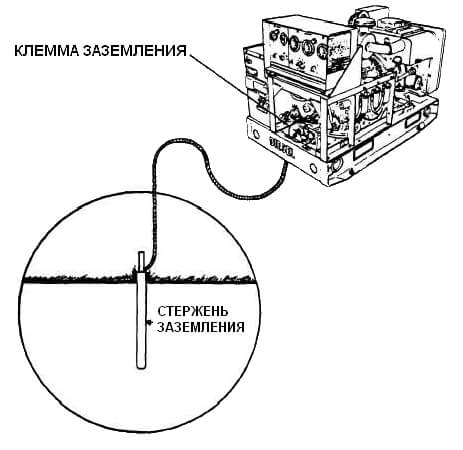
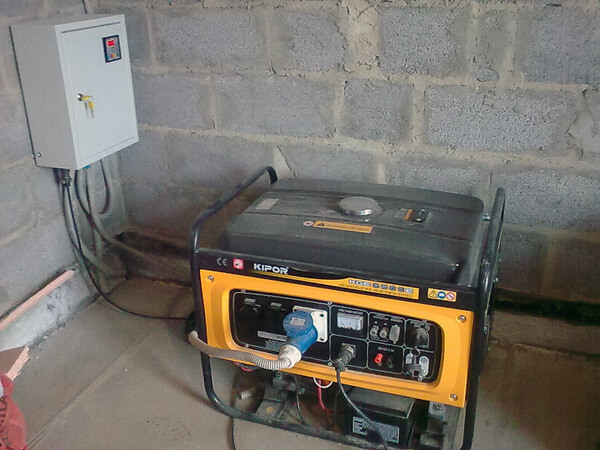


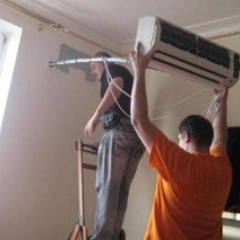
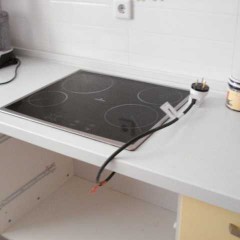
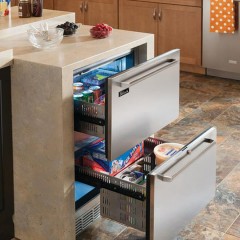

Hello. How to connect to the house is understandable, optimally through the reversing switch. But no one asks the question, but where is the phase and zero of the generator?
I am very interested in this and I can’t find the exact answer to this question.
The entrance to the shield is through the switch, then the RCD is selective, then the RCD and the machines along the lines. Where and most importantly how to get zero from the generator? Inverter generator. Without zero, the RCD will not work. Please tell me if you know. Once again, the inverter generator.
There are two connection schemes.We connect one of the generator outputs to the ground loop, if it is not specified in the passport, it will be zero. The second scheme for a two-wire network does not imply the presence of earth. The generator is located on an isolated platform and the system in no way interacts with neutral and zeros. Some gas boilers may not work with this connection.
Thank.
And coal-fired automatic boilers?
and what devices will not work from a non-inverter benzo generator?
will not fail?
such as a laptop power supply.
The laptop’s PSU is pulse, it can even be fed with constant power, if only the voltage was in the allowable range.
Greetings to a colleague! I had a need to connect a three-phase generator as a backup power supply to a three-phase network, and although I have had more than 20 years of practice behind me, this question has put me in a deadlock, I just can’t figure out if it is necessary to disconnect PE and N conductors from the city network? Tell me if not hard.
Hello! Not necessary. They are not sources of voltage.
are not, but they can be energized under certain circumstances, I again bifurcate again, one half division after another against
Well, at least he said his opinion, and you already weigh the pros and cons.
N is still necessary, but PE is not, provided that it is re-grounded or it is understood that it is definitely grounded.
you need to collect, practice will indicate a way out, but in theory I will doubt it, thanks for the advice.
Help guys, I have an automatic heating boiler in a private house. They turned off the light, bought a gas generator, the auger works as expected, but the fan barely spins. Here is a controller: KG Elektronik SP-10 2P. Here's a fan: KG Elektronik DP-02. Here is a generator: 3.0kW / 3.3kW, 220V G4000A, EUROLUX. They gave light, everything works fine from the network. They again turned off the light, the generator was working, connected various electronic devices, but the fan on the boiler did not want to work.
that's a shame, the generator was purchased specifically for the boiler.
boiler seller answered my question
“These fans use triac regulators. Apparently this generator does not produce current at the right frequencies. ”
that's what they answered on the forum
“Most likely, this generator does not produce a“ pure ”sine wave at the output, and therefore the fan behaves this way. Drill, grinder and other tools will work without problems on such a generator. To restore the sinusoid for the fan, you also need a resonant filter.
When buying, you need to consider why the generator will be used. With a pure sine wave, generators are more expensive. ”